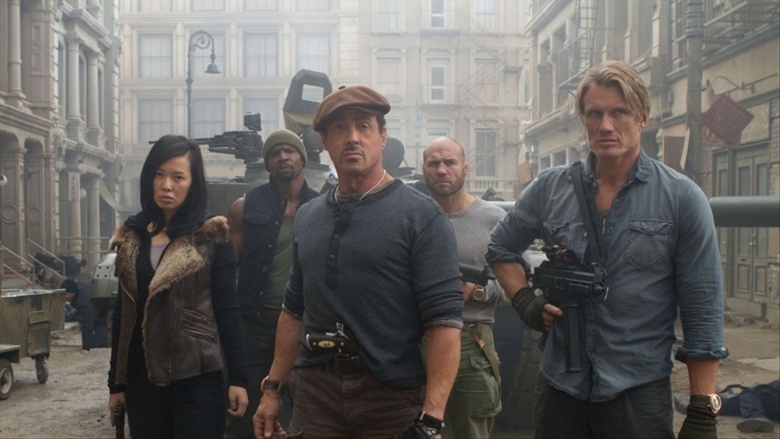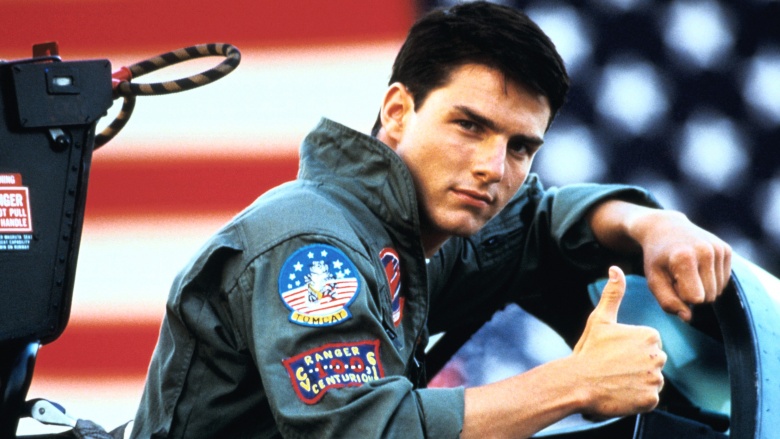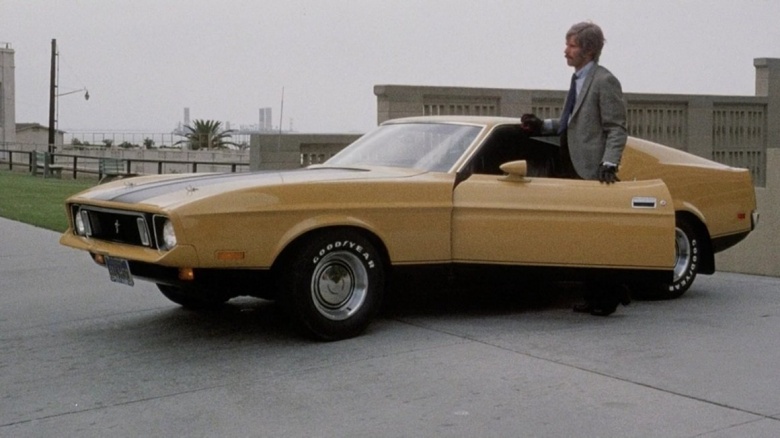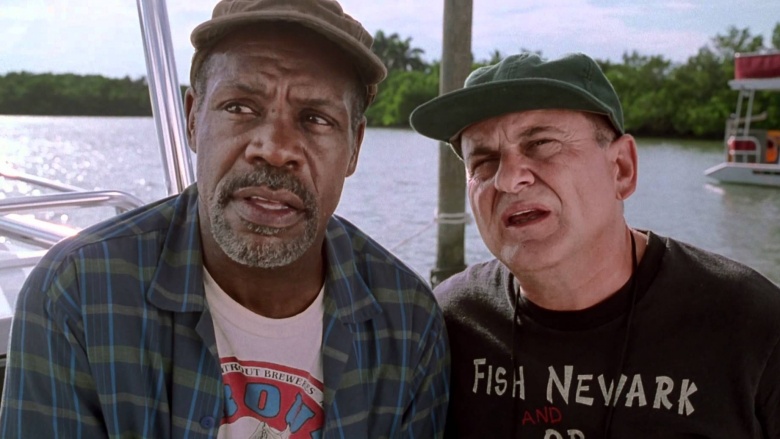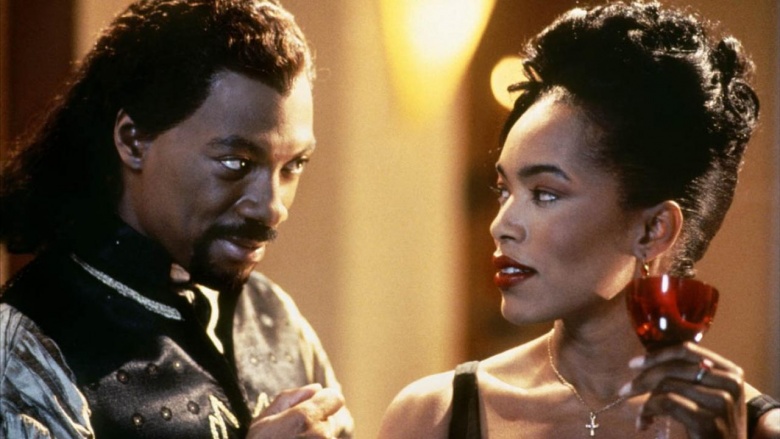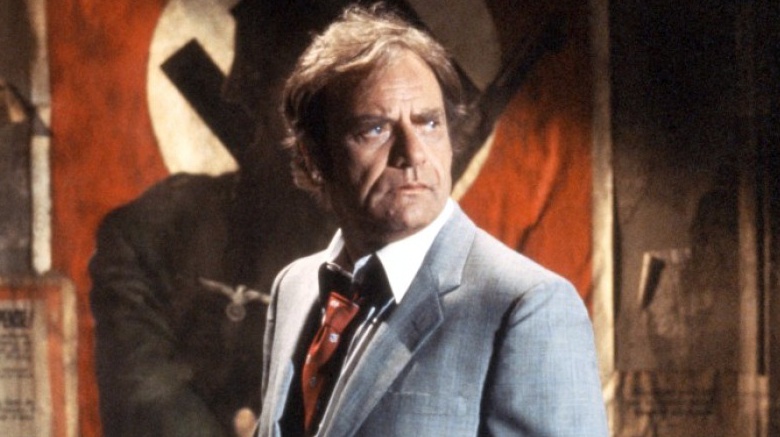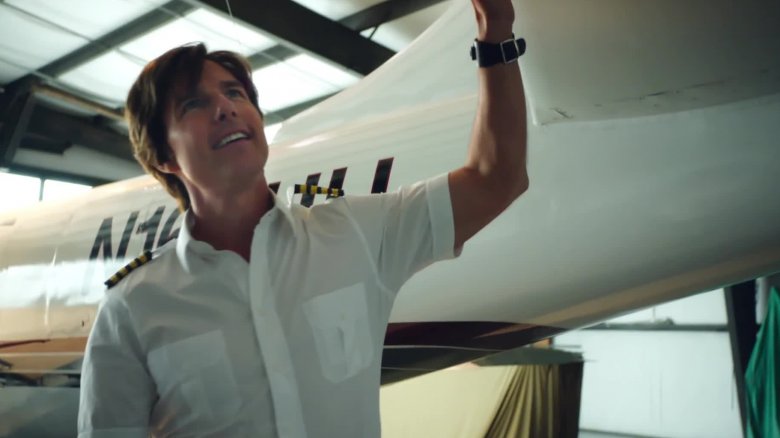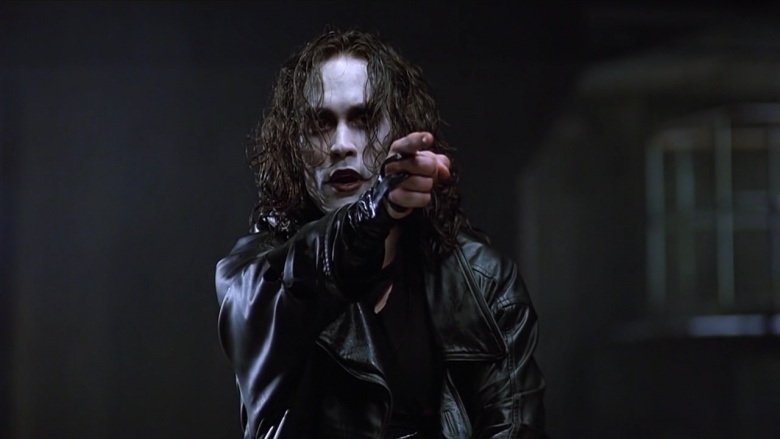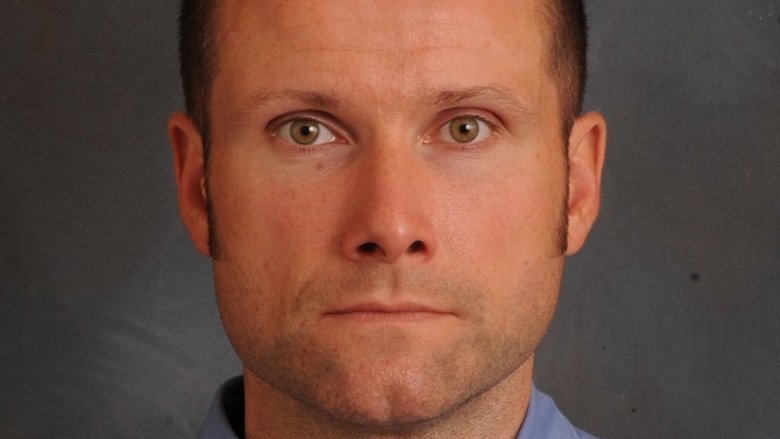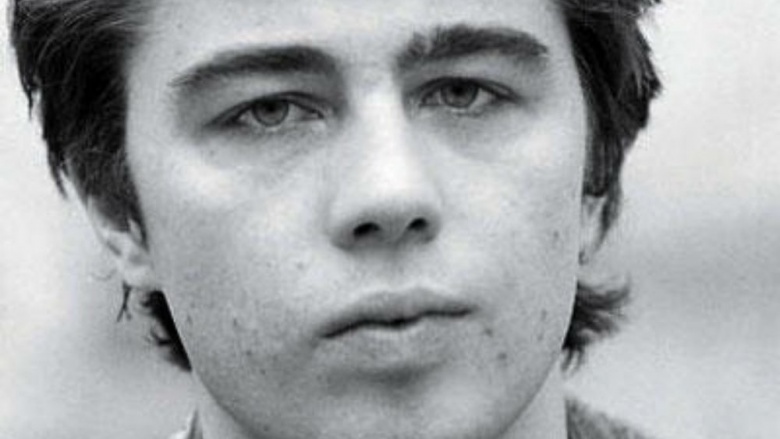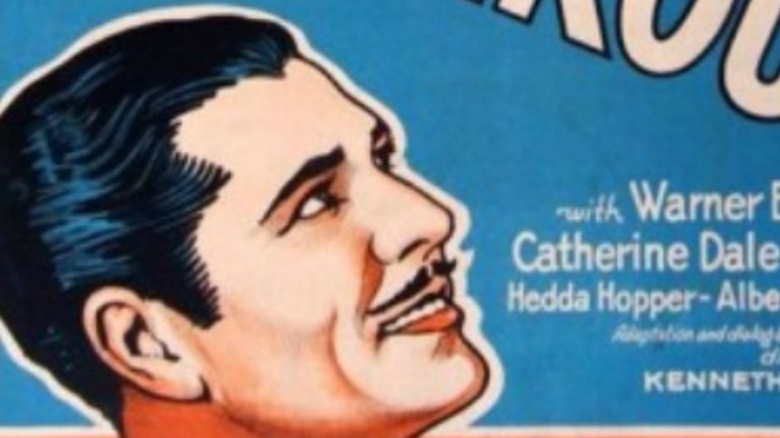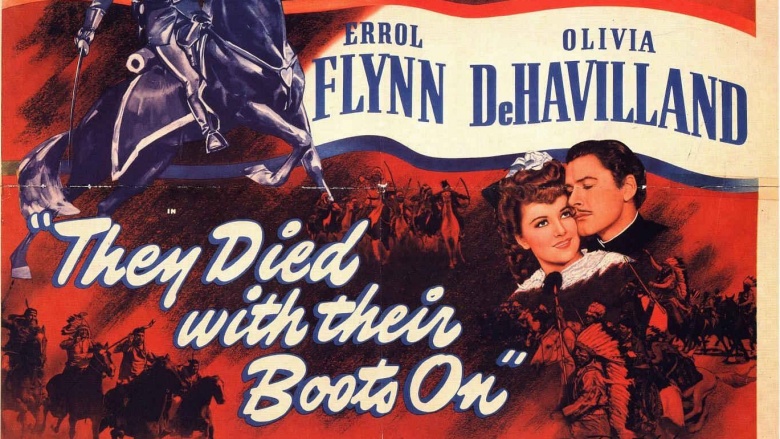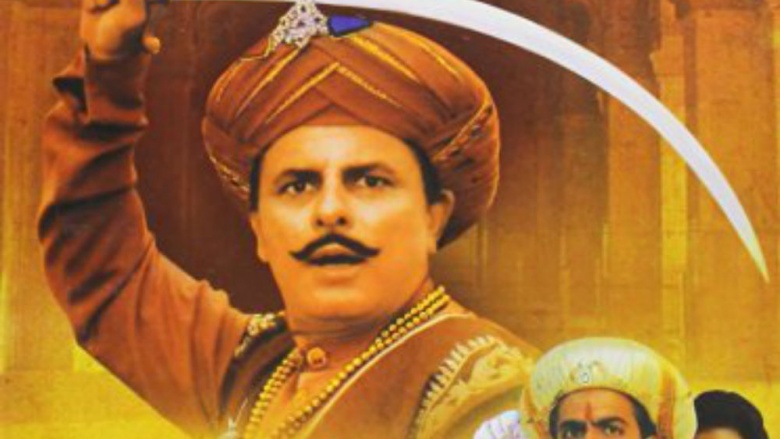The Most Disturbing On-Set Deaths
Movies are generally regarded as safe spaces for audiences to experience a few harmless thrills, but there's a lot of work we tend not to think about that has to happen behind the scenes in order to make that Hollywood magic happen — and the process of creating those stunning visual dynamics is often seriously risky business for everyone involved. When things go wrong, the results can be fatally disturbing. The unsung heroes who pay the price are often among the least famous — and hardest working — people in the movie business, and it's a shame that their occasionally costly efforts are so often insufficiently recognized. With that in mind, we've rounded up a list of movies that proved particularly dangerous behind the scenes — and couldn't get through filming without enduring some of the most horrifically fatal set accidents in Hollywood history.
The Expendables 2
Sylvester Stallone's The Expendables 2 stuntman, 26-year-old Kun Liu, was tragically killed in a stunt gone wrong on the Bulgarian set of the action sequel. The actor was reportedly on an inflatable rubber boat for a second unit shot involving an explosion when the pyrotechnics went off, killing him and injuring another stuntman in the scene. His parents sued Millennium Films, the production company, as well as the stunt coordinator for negligence in creating unsafe set conditions, wrongful death, and loss of consortium.
Midnight Rider
One might think (or hope) that most of these cinematic catastrophes were some relic of a laxer regulation era and that modern movies are safer for their cast and crews, but one of the more shocking incidents happened in the very recent past on the Jesup, Georgia set of Midnight Rider. Director Randall Miller was charged with manslaughter after his crew was sent out to the town's Doctortown Train Trestle on February 20, 2014 to film a scene with a man (played by William Hurt) laying in a bed on the tracks.
Hurt said that he "had an unsettling feeling from the very time [he] got there" to film the scene. "I stopped everything and I said in front of everybody, I said, 'Stop.' And I asked Hillary [Schwartz, assistant director] in front of the whole crowd, 'Are we safe?' Because it's her job as the first AD to tell us that. She said, 'Yes.'" He added that the cast and crew were told they'd have a lookout in place to alert them of any oncoming train cars and that they'd have 60 seconds to get off if one were spotted, but he was convinced it wasn't enough time to reach safety. "I said in front of everybody, '60 seconds is not enough time to get these people and this equipment off this bridge. There's just no way.' And then I looked around thinking that the crew, who had all worked with her before, would say something and they didn't. They just started shambling back to work, and I thought, 'Well, that's their vote. They trust her.' So I went to work."
As he anticipated, the window of exit time was not enough for the cast and crew to evacuate the narrow bridge as the train approached at 58MPH, and 27-year-old camera assistant Sarah Jones was struck and killed by the vehicle, while several others were injured. The grisly incident was captured on film by the crew's cameras, and director Randall Miller pled guilty to involuntary manslaughter as a result of the accident. He was released early from his two-year sentence in 2016, but is still legally forbidden to be involved in a film in any capacity involving safety responsibilities. Schwartz and executive producer Jay Sedrish were sentenced to probation.
Top Gun
All those aerial trick maneuvers that made Top Gun such a maverick movie came at a devastating cost for one of the pilots who helped make them happen. Art Scholl, an experienced airman, was unfortunately killed during production of the 1986 action-adventure classic after he lost control of his plane during an inverted flat spin and crashed into the Pacific Ocean during the shoot on September 16, 1985.
Eerily enough, the circumstances of the accident were strikingly similar to what happened in the events of the movie itself, in which the character Goose (played by Anthony Edwards) was also killed after failing to recover from a flat spin. The move was considered relatively low-risk for a pilot of his caliber, and it's impossible to know exactly what went so wrong that day because he'd requested some space to perform his maneuvers and when help did arrive, his vessel and body were never found.
Gone in Sixty Seconds 2
Before the 2000 reboot of Gone in Sixty Seconds crashed its way into the box office, the first film's director H.B. "Toby" Halicki efforted to make his own follow-up to the 1974 original with what would've been called Gone in Sixty Seconds 2. Halicki already had a history of on-set scares with the first film, when an actual train derailment took place during production (he included the footage in the film), and he suffered a nasty spinal injury while performing a big jump scene in the finale.
Nevertheless, Halicki returned to the story in 1989 and desired to ramp up the stunt surprises even further by having a tractor trailer collide with a 160-foot-tall water tower, which would then collapse to the ground. Unfortunately, the cable supports for the structure snapped prematurely and severed a telephone pole, which also fell and crushed Halicki to death. Just days before the incident, Halicki had described his plans for the daring scene, telling press, "when I lose the tractor-trailer, which is what I'm supposed to be driving, I hit the tower with it, it comes down, I do the helicopter lift-off while I'm hanging from a helicopter, and it drops me off to a building."
Gone Fishin'
What should have been a slick boat leap and landing maneuver turned fatal for one of the stuntwomen on the set of Disney's 1997 live-action family comedy Gone Fishin'. In a scene in which a boat was supposed to hit a ramp and land between two other boats, the stunt driver involved reportedly hit the ramp at an angle, tipping it over and sending it flying into two other boats, which then hit a group of extras standing around as the background crowd. 29-year-old Janet Wilder was fatally injured by the mishap, and four others were hurt—including her husband, whose hand she was holding at the time of impact, and her father.
Vampire in Brooklyn
Angela Bassett's 27-year-old stunt double Sonja Davis was tragically killed in front of her mother and siblings on the set of Vampire In Brooklyn on November 3, 1994, when a 42-foot backwards fall stunt went horribly wrong. As cinematographer Mark Irwin described it, "Sonja had to drop into the alley from the top of the building. The space between the buildings was twelve feet across and the airbag was twelve feet. This airbag was as big as a house, it filled the alley entirely. That's why there was no ambulance on set. There was an ambulance the first night but not the second, because this airbag was so big."
In Irwin's mind, "there was no way she could miss it unless she did the stunt wrong," but as he later recalled, that's exactly what happened. "Sonja had done all the moves, she was aware of the scene. Leading up to the fall she was hanging on the side of the building, or it was supposed to look like that. We had something underneath her. Before she fell, the stunt coordinator said, 'Don't push off, just relax and fall back naturally.' Well, she didn't relax. She pushed so hard her head hit the opposing brick wall and when she fell only the tips of her toes touched the airbag. The rest of her body hit the pavement. She landed at my feet."
As Davis' mother Wanda Sapp remembered, "The last words I heard my baby say was when she yelled down to the stunt coordinator, 'Are you sure?' ... I could feel Sonja wasn't comfortable with the stunt." Davis' family filed a wrongful death lawsuit against the production company, director Wes Craven, and actor Eddie Murphy after the incident.
The Twilight Zone: The Movie
John Landis' original segment in 1983's Twilight Zone: The Movie, titled "Time Out," starred actor Vic Morrow as a bigoted man named Bill Connor who's made to experience his own hatred through the eyes of others as he time hops through some of the 20th century's most heinous race-based conflicts. The segment was originally supposed to have a happy ending, with Bill rescuing two Vietnamese children from the fray of jungle warfare to redeem himself, but filming of the would-be final scene took a horrific turn.
On July 23, 1982, Morrow carried child actors Myca Dinh Le, a seven-year-old, and Renee Shin-Yi Chen, just six, across a river as a helicopter flew overhead to simulate the danger of the scene. The craft was helmed by an experienced pilot (and a real-life Vietnam vet), but a mortar effect exploded too closely to the vessel after the director demanded that the pilot fly the craft lower than he'd been. The helicopter careened out of control due to the blast impact and beheaded Morrow and Le before crushing Chen to death. According to co-star Dick Peabody, "Vic's last words in life, while holding two children and waiting for the director to say 'action' were, 'I've got to be crazy to do this shot. I should've asked for a double."
American Made
The Colombian production of American Made became the site of a tragedy when two pilots lost their lives in a plane crash on the set. The film, which gives cinematic life to the true story of Barry Seal, a pilot who ran covert operations in Central America for the Central Intelligence Agency, required a lot of aerial shots and acrobatics in dangerous conditions. And on September 11, 2015, one effort to return for more sky shots became catastrophic when the plane crashed near a small village.
According to The Hollywood Reporter, local villagers discovered the wreckage after witnessing the wreck and found that all three pilots inside were alive, albeit burned. By the time medical assistance arrived, however, only one (Jimmy Lee Garland) was alive, while the other two (Alan Purwin and Carlos Berl) had perished. The families of the deceased brought legal action against the studios, alleging that actor Tom Cruise and director Doug Liman demanded "lavish" shots during long days, which may have contributed to the cause of the plane's crash. According to an e-mail submitted from Purwin, the pilot previously wrote that "DL [Director Liman] and TC [Cruise] [are] adding entire scenes and aerial shots on the fly. Had to bring in Uni Safety to help wrangle them. In the last 48 hours this has become the most insane s*** I've ever dealt with." Cruise himself had reportedly been on a helicopter flight through the same terrain just minutes before the plane took the fateful path.
The Crow
Actor Brandon Lee, son of martial arts superstar Bruce Lee, was all set to step off of his father's famous coattails as Eric Draven in Alex Proyas' adaptation of James O'Barr's comic series The Crow, but his life was tragically cut short during what should have been a routine stunt shot gone terribly wrong on March 31, 1993. According to reports, a Magnum .44 pistol used in a scene was supposed to be loaded with a single harmless blank, but had a piece of a real bullet still lodged in the chamber from some earlier second unit use. When it was fired off by Lee's co-star Michael Massee as planned, the bullet pierced Lee's abdominal aorta; he could not be saved despite several hours of surgical effort.
The studio and filmmakers had the option to table the pic altogether, with insurance covering the production expenses, and while that might have been an attractive option given the devastation of the cast and crew, they decided to forge on and finish with subs coming in to round out Lee's remaining pieces so that his life's last work could be shared.
The actor who pulled the trigger on that fateful day later said he "wasn't even supposed to be handling the gun until we started shooting the scene, but they changed it." He wasn't to blame for the prop preparation mistake which cost Lee his life, of course, but it still took an emotional toll. "I don't think you ever get over something like that," said Massee of the devastating mishap. The film was eventually released to resounding praise in 1994, and, contrary to urban myth, did not include the actual footage of Lee's fatal wound.
Motherless Brooklyn
The Harlem, New York set of Edward Norton's period film Motherless Brooklyn became the site of tragedy as a blaze broke out on the former jazz club locale of the film on March 23, 2018 and claimed the life of attending firefighter Michael R. Davidson. Davidson was reportedly separated from his unit while searching the building for potential survivors, and he suffered from severe smoke inhalation before being found by his colleagues who attempted resuscitation before taking him to a local hospital, where he was subsequently pronounced dead.
The "five-alarm" fire broke out at the locale, which was formerly known as St. Nick's Jazz Pub, and according to Norton, the flames started in the basement of the building they were using for the shoot. An assistant director for the shoot called for the fire department's assistance and helped to evacuate the area of cast and crew and make room for the fire rig to access the building. "I have never witnessed firsthand that kind of bravery. I'm in awe of that kind of selfless courage," Norton wrote of the FDNY squad's response to the scene. "It's devastating to contemplate that one of the men we watched charging in there lost his life."
Davidson was posthumously promoted to Lieutenant by NYC Mayor Bill De Blasio and Fire Commissioner Daniel A. Nigro. He is survived by his wife and four children.
The Messenger
More than two dozen cast and crew members were killed on the Russian set of The Messenger on September 20, 2002 when a massive rock-ice slide buried them all on the frigid mountainside, including lead actor Sergei Bodrov, Jr. and 27 crew members. The disaster happened on just the second day of shooting for the film, and many of the bodies were never recovered from the scene due to the volume of ice and debris.
Such Men Are Dangerous
After principal photography was already complete on Kenneth Hawks' 1930 release Such Men Are Dangerous, the director and nine of the film's crew members boarded two small aircraft to capture a couple of aerial action shots—including a parachute jumper and a speed boat cruising in to retrieve him—and were all lost when they collided over Santa Monica Bay, California, killing everyone on board both planes. In addition to Hawks, the deceased also included his assistant directors, two cinematographers, the pilots, and additional crew members.
Sun glare is suspected to have been a factor in the first plane's deviation from course and, ultimately, the fatal collision. "They were about 3,000 feet high when their wing tips touched, drew apart, and then touched again," a witness reported of the ghastly sight. "When the second contact was made, one plane pivoted on its wing tip and collided with the other, almost nose to nose. A burst of flame suddenly consumed by Stinsons as two twisting bodies fell or jumped from the fireball. The men were already dead as the two burning airplanes struck the water and sank in 40 fathoms of the sea."
They Died with Their Boots On
The title of Raoul Walsh's 1941 black-and-white Western flick says it all here because, yes, several people died during the shoot—and chances are, given the circumstances, they may very well have been wearing boots at the time.
A total of three people lost their lives during Custer's film stand in They Died with Their Boots On, including an actor who broke his neck after falling from a horse and a stuntman who suffered a fatal heart attack on set. The third death was perhaps the most disturbing: actor Jack Budlong, who wanted to use a real saber to lead his cavalry in the big battle scene, fell from his horse as a result of a stunt explosion and impaled himself on his weapon.
Sword of the Tipu Sultan
This Indian television drama was supposed to pay tribute to the 18th century figure Tipu Sultan, a former ruler of Mysore, but in the process, it added its own dark chapter to the on-set injury history books. On February 8, 1990, a fire broke out at the Premier Studios where the show was being filmed with fireworks, and 62 lives were lost in the massive blaze. Sanjay Khan, the director and star of the broadcast, was also seriously injured during the inferno, requiring over a year of hospitalization and dozens of surgeries.
The fire was attributed to the fireworks, which ignited the ceiling and spread to the walls of the room quickly, since they were padded with flammable soundproofing materials. Meanwhile, the massive death toll was due to the fact that the building contained only two small exits, one of which was blocked by equipment.

